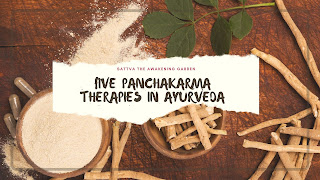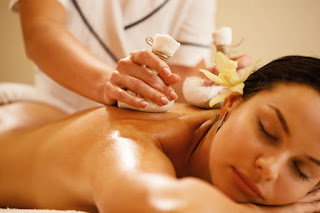Five Panchakarma therapies in Ayurveda
Panchakarma is a unique detoxification and regeneration program that offers intensive waste removal from the body on a cellular level.
Panchakarma means "five actions" or "five treatments" in Sanskrit.
To maintain mental and physical harmony, Ayurveda recommends Panchakarma.
Pancha "karma" refers to five Ayurvedic detoxification treatments that remove the body's accumulated toxins and mucus (Aama).
- Vamana
- Virechan
- Vasthy
- Nasya
- Rakta Moksha
Vamana
Vamana or emesis is a panchakarma procedure that induces vomiting to relieve toxic buildup in the upper part of the body and regulate the water element Kapha.
In addition to treating and preventing excessive Kapha disorders, this treatment regulates the water element in the upper part of the body. After the treatment, you will feel "light as a feather" and at peace.
Virechan
In Virechana, purgative substances are administered to cleanse pitta through the lower channels. Virechana should be given three days after Vamana. For individuals who do not require Vamana, virechana should be provided. Snehana (oleation) and svedana (sweating), both Purva karma, should be performed three days apart. Through Virechana, blood toxins, sweat glands, kidneys, stomach, small intestine, colon, liver, spleen, and rakta vaha srotas are cleansed.
Vasthi
Vata plays a vital role in pathogenesis (disease). The vast majority of diseases can be controlled by controlling vata through vasti. Most diseases are caused by vata, which is the primary etiological (cause) factor. This is accomplished by eliminating and retaining feces, urine, bile, and other excreta. Vasta is also found in the large intestine and bone tissue. The mucus membrane in the colon is also connected to the outer covering of the bones (periosteum). As a result, any medication that rectally corrects vata disorders reaches deeper tissues, including bones.
Nasya
Nasyam is one of the panchakarmas for cleansing the head region. This treatment mainly cleanses the upper body's 'Kapha' dosha.
Medicine is administered by nose in this procedure. In Nasyam, medicinal powders, specific oils, herbal juices, etc. are used. Medicated oils are the most common method.
Rakta Moksha
Bloodletting purifies the blood by removing toxins absorbed through the digestive tract. Urticaria, rash, eczema, acne, scabies, leucoderma, chronic itching, and hives are all treated with it. Chronic itching, hives, scabies, and leucoderma. Several pitta disorders, including acne and rash, can only be relieved by bloodletting administered by a qualified physician. The immune system is strengthened when it stimulates antitoxic substances in the bloodstream. A person who is anaemic, edematous, weak, or very young should not undergo bloodletting.




Comments
Post a Comment